Ever struggle to track your heartbeat while running? Talking? Standing still? Yeah, that can be common. But having a reliable heart rate monitor can make things a lot easier.
What are heart rate monitors and how do they help?
In a nutshell, your heart rate can act as a barometer for your general health and help you maximize your workouts or training sessions. The best heart rate monitors allow you to track your number of heartbeats while on the go.
Some monitors come as a feature on a smartwatch or fitness tracker, and others increase the accuracy with a chest strap that connects to an app via Bluetooth.
Runners, triathletes, and everyday peeps just getting their sweat on can use a heart rate monitor to fine-tune their workouts. A heart rate monitor can also help you gauge the effectiveness of a workout and incorporate recovery time properly.
So, what are the best types of heart rate monitors, you ask? We’re glad you did. Here’s our rundown of the eight best options we found.
8 best heart rate monitors
- Best overall: Polar H10 Chest Strap
- Best forearm band: Scosche Rhythm+ Heart Rate Monitor Armband
- Best for non-athletes: Apple Watch Series 6
- Best for runners: Fitbit Charge 4
- Best for triathletes: Garmin HRM-Pro
- Best smartwatch: Polar Vantage M
- Best wearable: MyZone Sports Shirt
- Best budget: CooSpo Heart Rate Monitor
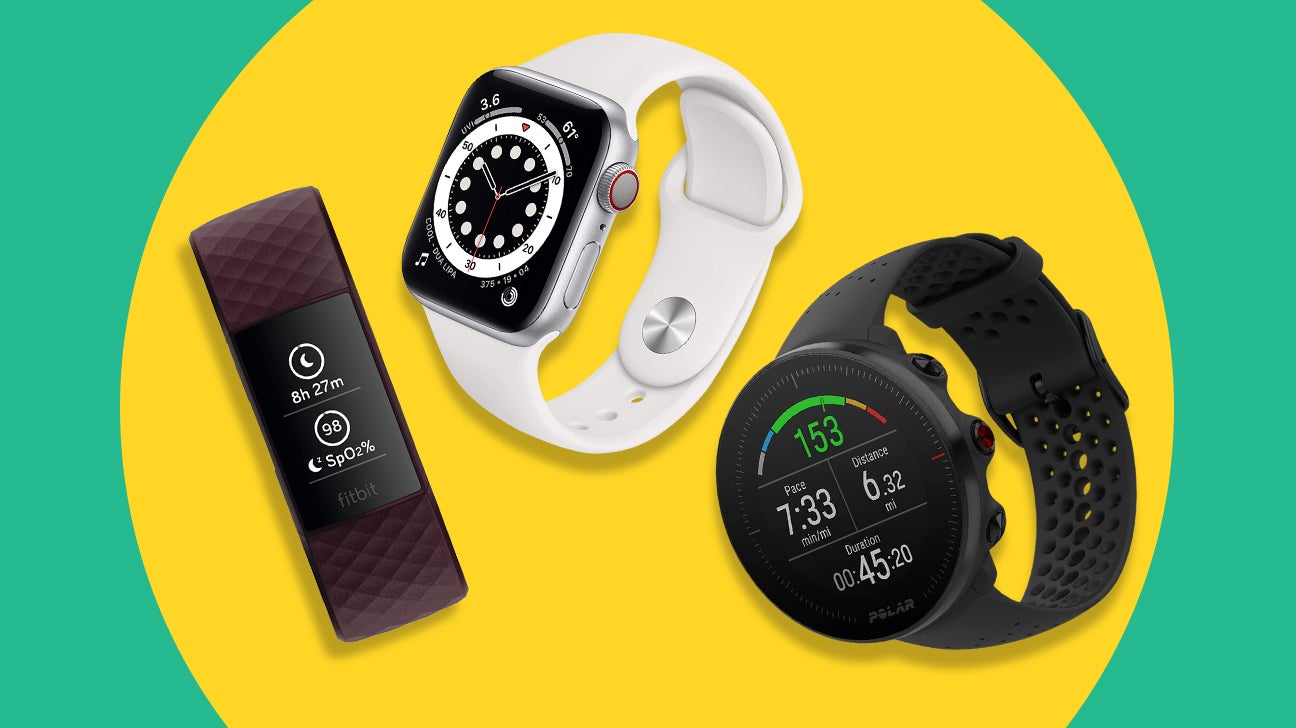
How we made our top picks
Heart rate monitors need to be accurate, comfortable, and practical for your goals, whether those goals are fitness-related or not.
So, here are the criteria we used to select the best heart rate monitors:
- Accuracy. Home heart rate monitors can’t compare to monitors categorized as medical equipment (which these are not), but they can offer impressive accuracy that will help you better monitor and manage your health.
- Strap comfort and adjustability. For chest and forearm straps/bands, a flexible material that doesn’t dig into your skin but snugly holds the monitor in place is a must. Smartwatches and fitness trackers with different size options or band lengths can help you get a more comfortable fit, which also enhances accuracy.
- Ease of use. Device compatibility, display, and extra features came into play too. Same with how easy it was to access data in real time versus stored data that you could check later. One isn’t better than the other, but if you’re using a heart rate monitor to adjust your output during a training session, you’ll need that real-time data.
Pricing guide
- $ = under $100
- $$ = $100–$300
- $$$ = over $300
Best heart rate monitors
Let’s get trackin’!
Best overall: Polar H10 Chest Strap
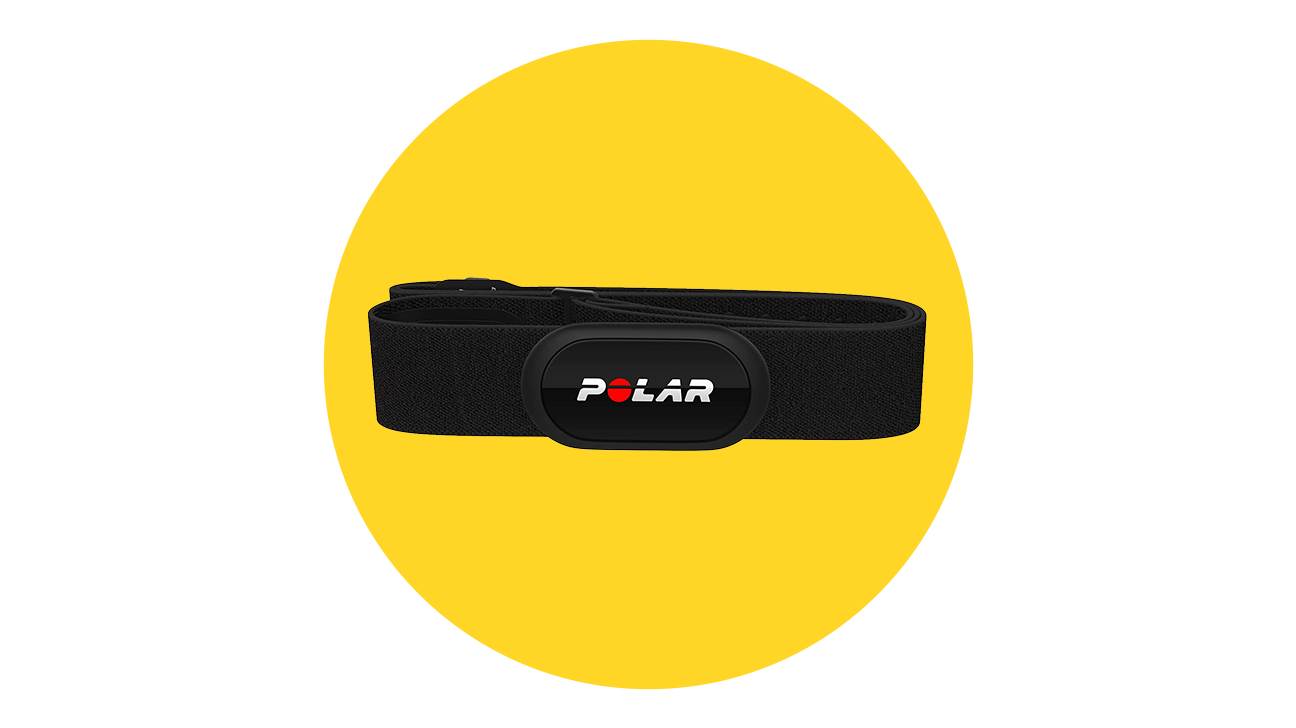
- Price: $
- Type: chest strap
- Sizes: XS–S, M–XXL
- Colors: black, gray, turquoise, orange
- Notable features: compatible with many fitness apps, waterproof, 400-hour battery life
The Polar H10 Chest Strap is lauded as one of the most accurate heart rate monitors out there. It’s a fairly simple design that’s compatible with a number of apps, including Apple Health (though it can have connectivity issues), Strava, MyFitnessPal, and Nike+ Run Club. It’s also ANT+ and Bluetooth compatible, so it can connect to smart fitness equipment.
It’s dubbed the best overall for its accuracy in different types of workouts, including cycling, running, and swimming, as well as its 400-hour battery life — but it’s at its least accurate in the water.
The H10 can store information for one training session, so even if you don’t have your phone with you, it will send the data once you get in range.
Best forearm band: Scosche Rhythm+ Heart Rate Monitor Armband
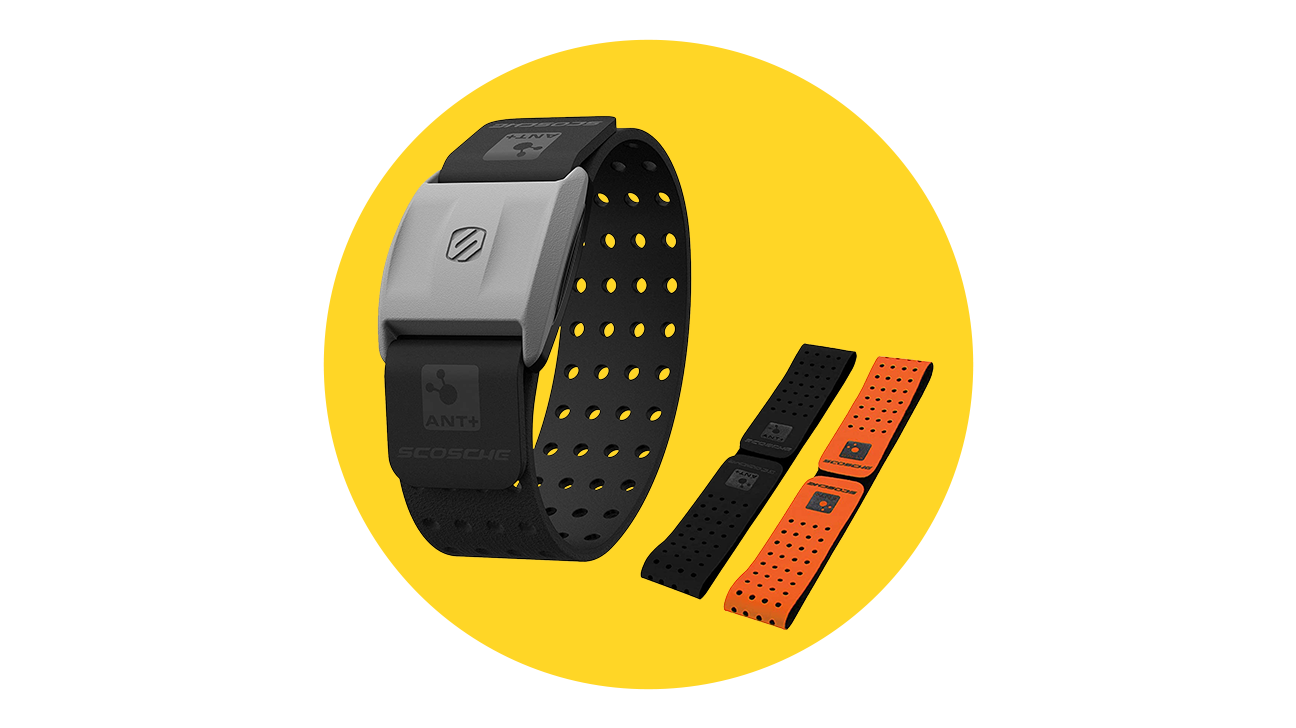
- Price: $
- Type: forearm band
- Sizes: one size fits all
- Colors: black, blue, gray, red
- Notable features: first monitor designed for forearm or biceps; works with smart, Bluetooth, and ANT+ devices; compatible with 200+ apps
The Scosche Rhythm+ Heart Rate Monitor Armband is an excellent alternative to a chest strap. It’s equally accurate and easier to wear, and it can be worn in various places on your arm.
This is our pick for best forearm band because of the simplicity of the optical sensor technology and the accuracy of the readings. It doesn’t monitor a lot of extras, like cadence or heart rate zones, but what it does do, it does well.
It’s compatible with ANT+, Bluetooth, and smart devices. Plus, it works with a whopping 200+ apps. As an IP68 device, it’s also wearable in the water for up to 30 minutes. Reviewers like how well it pairs with Peloton and other fitness equipment and appreciate the accuracy.
If you want more health data like timing and splits, this isn’t the heart rate monitor for you. It keeps things simple and won’t disappoint on the accuracy. One of the few downsides is that it has to be within 100 feet of the connected device to work.
Best for non-athletes: Apple Watch Series 6
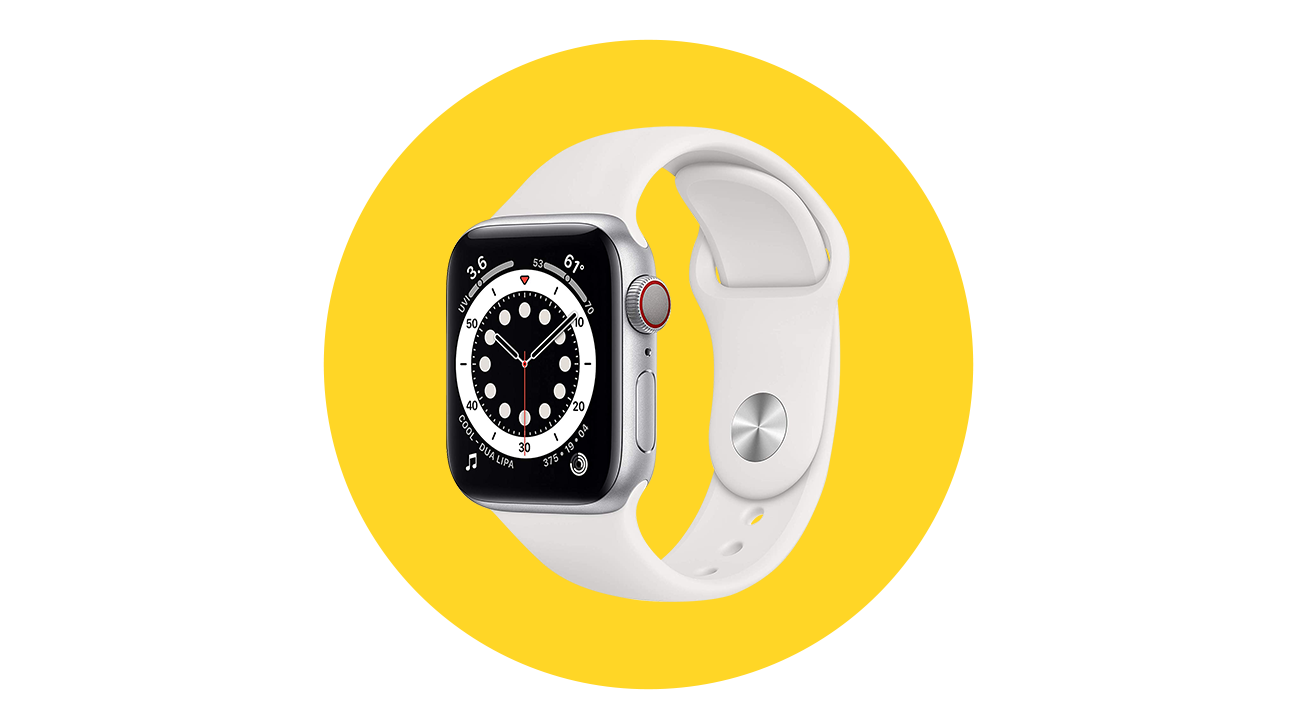
- Price: $$$
- Type: smartwatch
- Sizes: 40 mm, 44 mm
- Colors: navy, black, silver, white, red
- Notable features: built-in voice assist, pulse oximeter, touch screen, music player
In addition to monitoring your heart rate, the Apple Watch Series 6 can send and receive texts, play music during your workout, and track your workout using GPS. Plus, there are fun extras like the accelerometer, compass, and gyro sensor.
The Series 6 tracks your daily activity like a fitness tracker and registers a wide variety of workouts, from yoga and swimming (it’s waterproof, so no need to take it off) to cycling and dance. You can track elevation and see how your heart rate changes throughout your workouts.
Users like the quick charging and battery life more than the previous version. They also like having quick access to health metrics, though they wouldn’t mind a little help interpreting them. However, the battery drains like a sieve when you’ve got GPS, music, and other energy guzzlers going.
Best for runners: Fitbit Charge 4

- Price: $$
- Type: fitness tracker
- Sizes: small and large
- Colors: rosewood, gray, black
- Notable features: Fitbit app, built-in GPS, extra sleep tools
A heart rate monitor that offers accuracy with Fitbit extras can help runners gauge and adjust their workout intensity during training sessions. This model’s heart rate monitor does well for accuracy, though you do have to find the sweet spot between too tight and too loose with the band.
Then there’s the Fitbit app, which offers an excellent range of extras. You can see where your heart rate falls in the “zones” — fat burn, cardio burn, and peak — so you don’t need to calculate your zones yourself. And you can see what happens to your heart rate while you’re in each zone. You can also track your food, water, stress management, and sleep through the app.
Reviewers report that the GPS connects faster than other fitness trackers and offers accurate readings. However, the battery drains quickly. The only other issue is that the screen wakeup can be slow and finicky, taking a few more taps than it probably should.
Best for triathletes: Garmin HRM-Pro
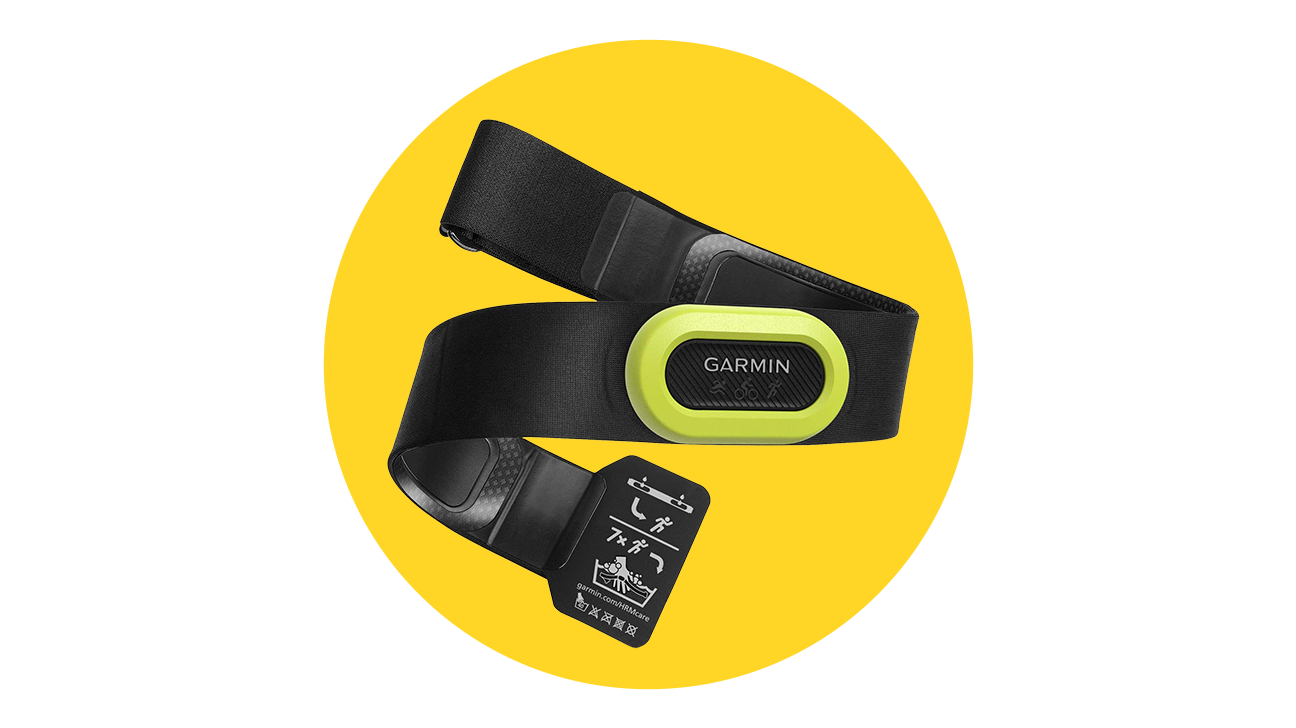
- Price: $$
- Type: chest strap
- Sizes: one size fits all (optional strap extender available)
- Colors: black and yellow
- Notable features: monitors non-workout activity, transmits real-time data
The Garmin HRM-Pro is the kind of device designed to maximize workouts and cut times of each triathlon leg. That’s because it does far more than monitor your heart rate. The sensors also track vertical ratio and oscillation, ground contact time, ground contact time balance, and running power.
It offers features that Garmin devices are well known for, such as cadence and stride length. Those extras definitely give triathletes more information to help shave off seconds from their times.
It’s designed to be worn for running, cycling, and swimming and can record and store information until you’re near a device it can sync with. However, if you’ve got a compatible Garmin watch, it can offer real-time stats.
This strap is ANT+ and Bluetooth capable and compatible with a wide range of devices. Reviewers love that it can connect with ANT+ capable stationary bikes and treadmills for use during indoor workouts. However, some of the features, such as access to running dynamics, are available only on certain Garmin devices.
Best smartwatch: Polar Vantage M
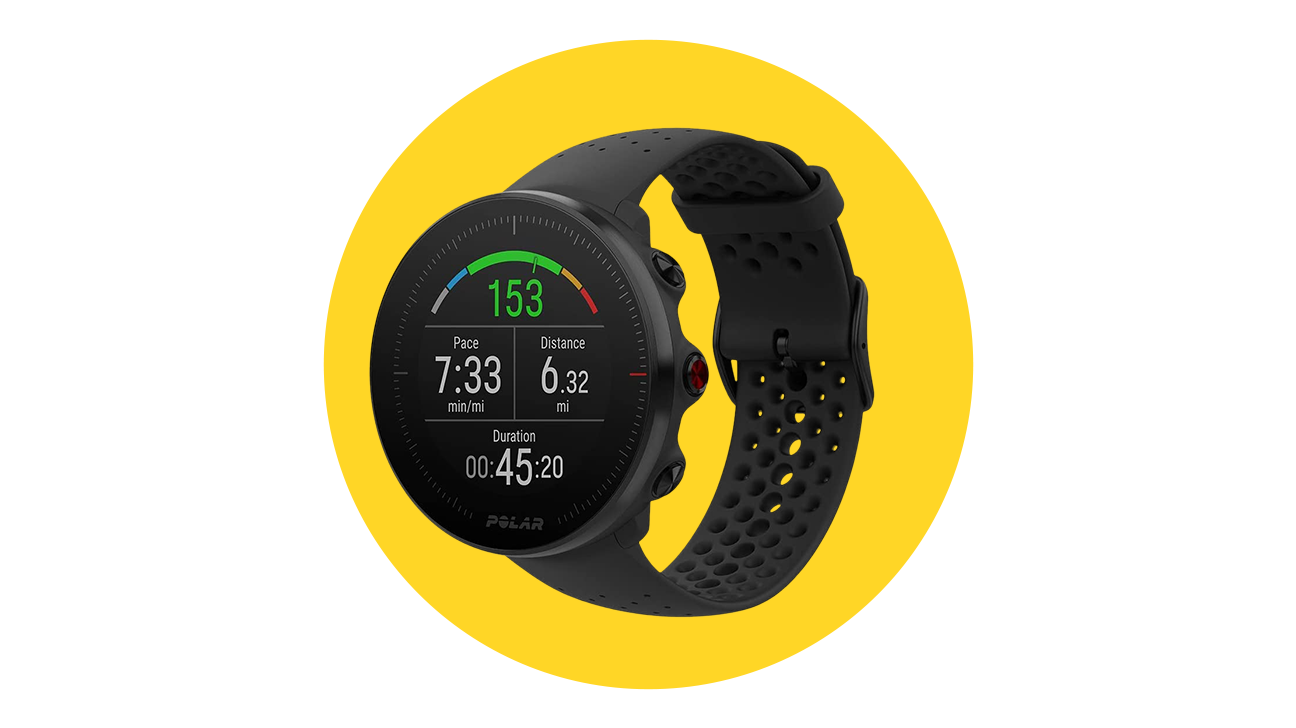
- Price: $$–$$$
- Type: smartwatch
- Sizes: S, S/M, M/L
- Colors: black, white, black/copper
- Notable features: onboard breathing and stretching exercises and training programs, 5 physical buttons rather than a touch screen
The Polar Vantage M offers numerous customization options, breaks your heart rate into fitness zones, and even includes a VO2 max test built into the watch. Now, any VO2 max testing done on a watch won’t be entirely accurate, but it offers information to help you maximize your training.
While this may not give you the full range of downloadable options, the functionality of the heart rate monitor and the training options are what put this model on our list. (Plus, it’s about half the price of fancier smartwatches.)
Built-in training programs range from breathing exercises and stretches to cadence training programs that help you target different heart rate zones. To put it succinctly, the Vantage M monitors your heart rate, tells you what to do with it, and uses it to help you reach your fitness goals.
Some reviewers might be turned off by the manual dial controls rather than a touch screen. However, other reviewers find the dials intuitive, especially while wearing gloves.
Best wearable: MyZone Sports Shirt
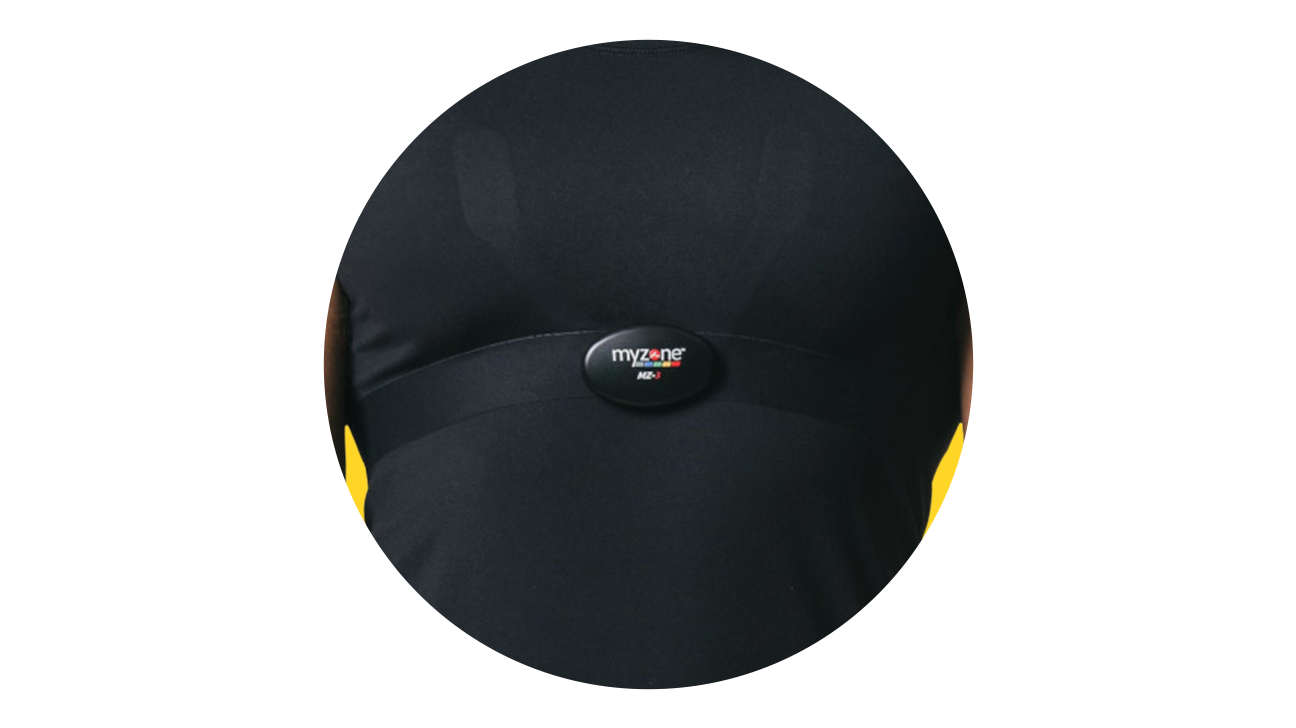
- Price: $
- Type: shirt
- Sizes: standard, large, extra-large
- Colors: black
- Notable features: tracks heart rate without a strap or wrist/forearm device
The MyZone Sports Shirt works using a chest monitor, but that monitor is built into a moisture-wicking sleeveless shirt. The shirt is a blend of polyamide and elastane for a snug but comfortable fit.
The MyZone works by syncing with an MZ-1, MZ-2, or MZ-3 device that then displays your heartbeat. It’s a comfortable alternative to a chest strap, BUT it works only with MyZone devices and club displays (and only in a design meant for men, although all genders can use it).
MyZone users who can’t get comfortable in a traditional chest strap appreciate this more comfortable option.
Best budget: CooSpo Heart Rate Monitor
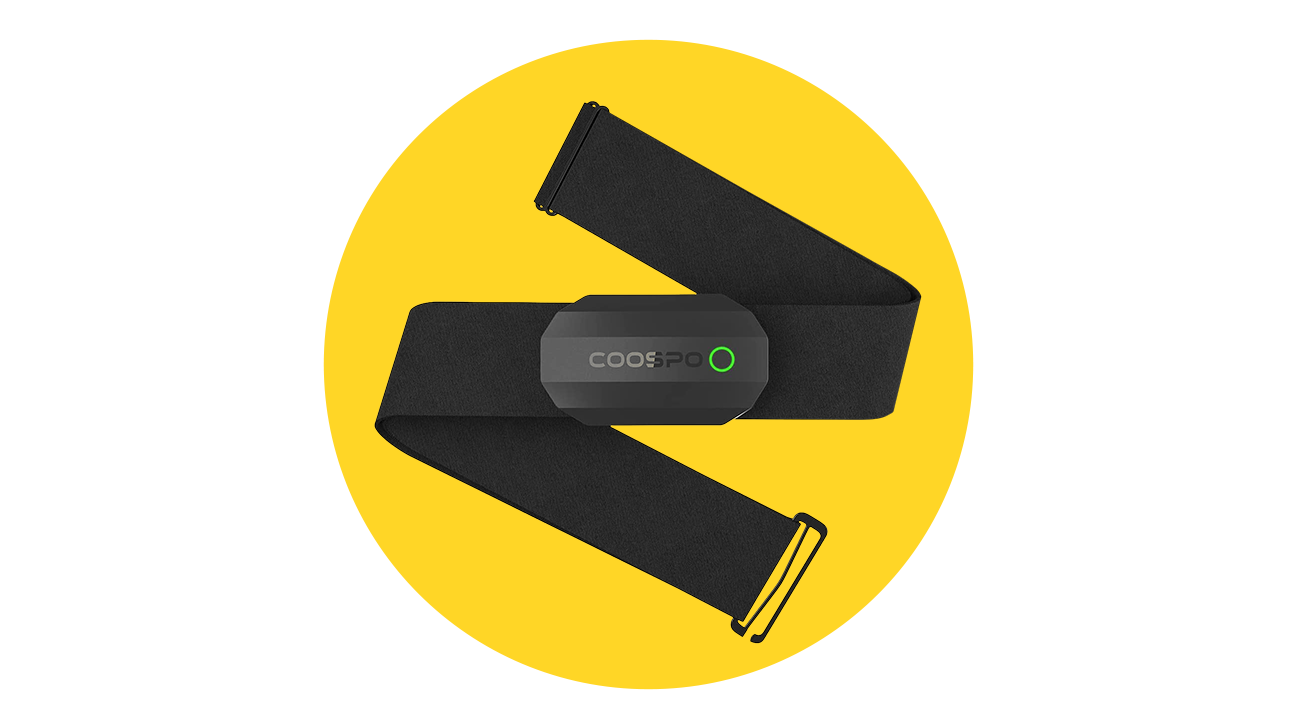
- Price: $
- Type: chest strap
- Sizes: one size fits all
- Colors: red, black, blue
- Notable features: ANT+, Bluetooth, compatible with many third-party apps, power indicator and connectivity lights
The CooSpo Heart Rate Monitor doesn’t have some of the premium physio features of other monitors, but it does two things very well: compatibility and heart rate. This chest strap is both ANT+ and Bluetooth capable. These two options allow it to connect to more than 200 apps, GPS devices, and smart fitness equipment like smart treadmills, rowers, and stationary bikes.
The CooSpo gets bonus points because you can remove the sensor to clean the strap (goodbye, strap stink!). This model also contains a feature that you don’t realize is nice until you use it — the indicator light. A blue indicator light means Bluetooth is connected, and green means it’s not.
Reviewers like the affordable price and reliability. Most are willing to forgo extra info like cadence and stride length in exchange for a chest strap that’s accurate and easy to use. However, they do warn that the sensor unit goes through batteries quickly.
Who should get a heart rate monitor?
Your preferred activities and fitness goals can help you determine whether you could benefit from using a heart rate monitor and which type is right for you.
If you fall into any of the following categories, strongly consider getting one:
- Competitive athletes. Runners, triathletes, cyclists, and other pros use heart rate monitors to maximize their workouts. Your heart rate can reveal the intensity of the workout and whether it’s time to push harder or pull back.
- Fitness enthusiasts. If you’ve ever wanted to estimate whether you’re in your fat-burning zone or cardio zone, a heart rate monitor can help you do it — some by connecting to an app and others by giving you the data you need to estimate for yourself.
- The health-conscious/curious. Wonder what your heart rate is doing while you walk, take the stairs, or sit at your desk? A heart rate monitor gives you insights into how your body responds to everyday activities.
- Those with certain medical conditions. Some people have been advised by their doctor not to let their heart rate get above a certain level while exercising. In these cases, a heart rate monitor is critical to keeping your heart rate within safe limits.
If you use your heart rate to adjust your training routine, a chest strap that provides additional health data offers the best accuracy. However, for someone who just wants to keep an eye on their heart rate during normal activities and exercise, a fitness tracker might be the easiest and most comfortable option.
Frequently asked questions about heart rate monitors
Here’s more of what most people are asking before purchasing heart rate monitors.
Which heart rate monitor type is the most accurate?
Of the home heart rate monitor options, chest straps are the most accurate. These types use electrodes placed close to your heart to measure your pulse. Forearm and wrist monitors use photoplethysmography, which measures the amount of light reflected back through your skin, to calculate your heart rate.
The two options are both reliably accurate as long as you have a good fit, but ultimately a chest strap will be consistently more accurate.
Do heart rate monitors work for all types of workouts/exercise?
Even the most basic heart rate monitor should be able to keep up with your heart rate while you cycle, run, and do other cardio activities. Some fitness trackers and smartwatches can recognize certain types of workouts automatically, while others allow you to set the device to the specific activity you’re doing.
Some heart rate monitors are specialized for certain types of activities, such as swimming or triathlons. These models usually include other measurements that enhance the heart rate data, such as cadence, stride length, and other readings that can help you adjust your training.
Should I pay extra for a smartwatch with a heart rate monitor?
It depends on your goals and lifestyle. Smartwatches often (but not always) cost more than a chest strap or fitness tracker. If heart rate monitoring is your primary goal, you’ll get a better bang for your buck with a fitness tracker than with a smartwatch. Fitness trackers have more fitness-related features too.
However, if you want one device for fitness, communication, and organization, a smartwatch might save you money because you can do it all with a single device.
Can I get a heart rate monitor that syncs with my fitness tracker or smartwatch?
Some fitness trackers and smartwatches can also work with a chest strap heart rate monitor from the same manufacturer. These models offer the best of both worlds because you get the accuracy of a chest strap with the convenience and added features of a fitness tracker or smartwatch.
How do I know when I’m in my target heart rate zone?
There are three general fitness zones to be aware of when you’re working out: the warmup zone, fat-burning zone, and cardio zone. The warmup zone is when you’re going slow and may not even sweat. It warms your muscles and prepares your body for the work to come.
In the fat-burning zone, your heart works at 60 to 70 percent of its maximum. You burn more calories in this zone than in the warmup zone. However, your body is still burning fat for the majority of your calories.
In the cardio zone, your heart ramps up and beats at 70 to 80 percent of its maximum. Here, your body changes its fuel source from primarily fat to glycogen (carbs and sugar). You burn more calories in this zone and improve your cardiovascular health.
The following chart shows a very general glimpse of the zones, in beats per minute (bpm), by age:
| Age | Fat-burning zone (bpm) | Cardio zone (bpm) |
| 20 | 120 | 160 |
| 25 | 117 | 156 |
| 30 | 114 | 152 |
| 35 | 111 | 148 |
| 40 | 108 | 144 |
| 45 | 105 | 140 |
| 50 | 102 | 136 |
| 55 | 99 | 132 |
| 60 | 96 | 128 |
| 65 | 93 | 124 |
| 70 | 90 | 120 |
You can calculate your target heart rates more accurately using the following formula:
220 – your age = maximum heart rate (MHR)
Once you know your MHR, you can multiply it by 0.6 to find the heart rate that’s 60 percent of maximum for you. Then, multiply your MHR by 0.7 to find the heart rate that’s 70 percent of maximum for you. You can then use the same method to calculate your cardio zone.
When you work out, those numbers give you an estimate of where you should be so you can adjust your output as needed.
This chart and formula provide only a rough estimate. Your age, fitness level, and health conditions will affect your heart rate and how your body uses fuel. Talk with a healthcare professional about healthy heart rate zones specifically for you.
What to consider when choosing your heart rate monitor
Here’s how to decide which monitor is right for you:
- Type. Fitness trackers and smartwatches are the easiest to wear, but chest straps are often more accurate. In part, it comes down to how much convenience and comfort you want and need. For general workouts, an armband, fitness tracker, or smartwatch is convenient. More serious athletes will probably benefit from the accuracy of a chest strap.
- Comfort. Here’s where chest straps fall short. Many people prefer the comfort of a smartwatch or fitness tracker because it’s just like wearing a watch, which most of these devices double as anyway.
- Accuracy. Chest straps win out for accuracy thanks to their electrodes. However, the other options aren’t far behind. If you’re fine-tuning your training, a chest strap can help. If you just want to maximize your workouts, one of the other types can help and offer more comfort.
- Budget. Know your budget before you start shopping. You can get an accurate heart rate monitor for less than $100. If you’ve already got a fitness tracker or smartwatch, the manufacturer’s accompanying chest strap might not cost too much more.
- Extra features. Watch, cadence, music, texts — what kind of extras do you want and need? Athletes might need a model that analyzes their stride or cycling cadence, while others want to listen to music using only their smartwatch while they run.
The bottom line
Heart rate monitors are an excellent way to track your health and exertion levels while exercising or just going about your normal day. Depending on your goals, you can splurge on models that automatically recognize different workouts or guide you through built-in workouts (or those you get from an app).
Many models can sync with other fitness device, such as fitness trackers or smart gym equipment. Think about how you want to use the heart rate monitor and which features will enhance your workout experience. Once you’ve got that info, it’s about finding a model that’s comfortable for you to wear during your go-to activities.
Go out and get that heart pumping!

0 Commentaires